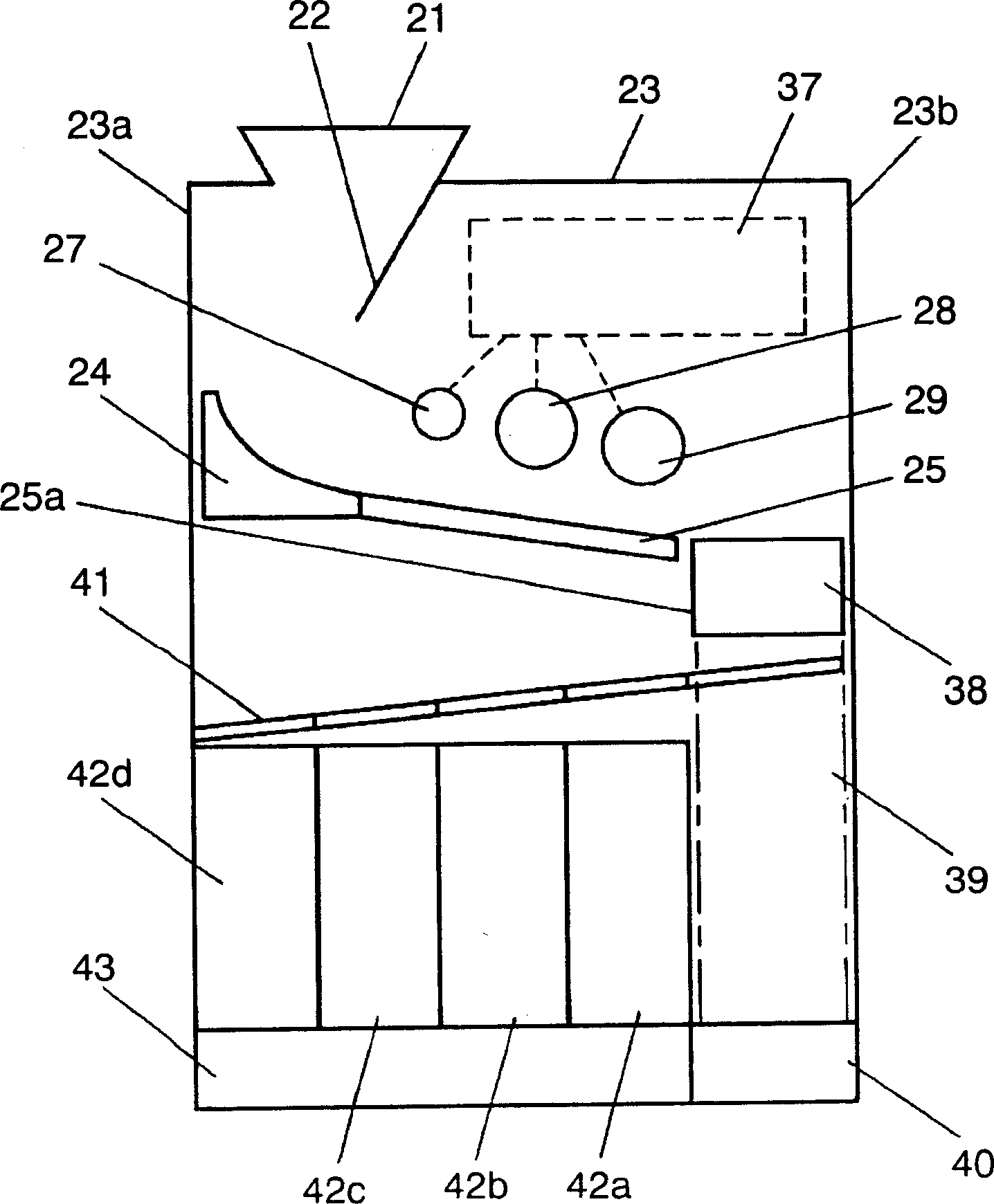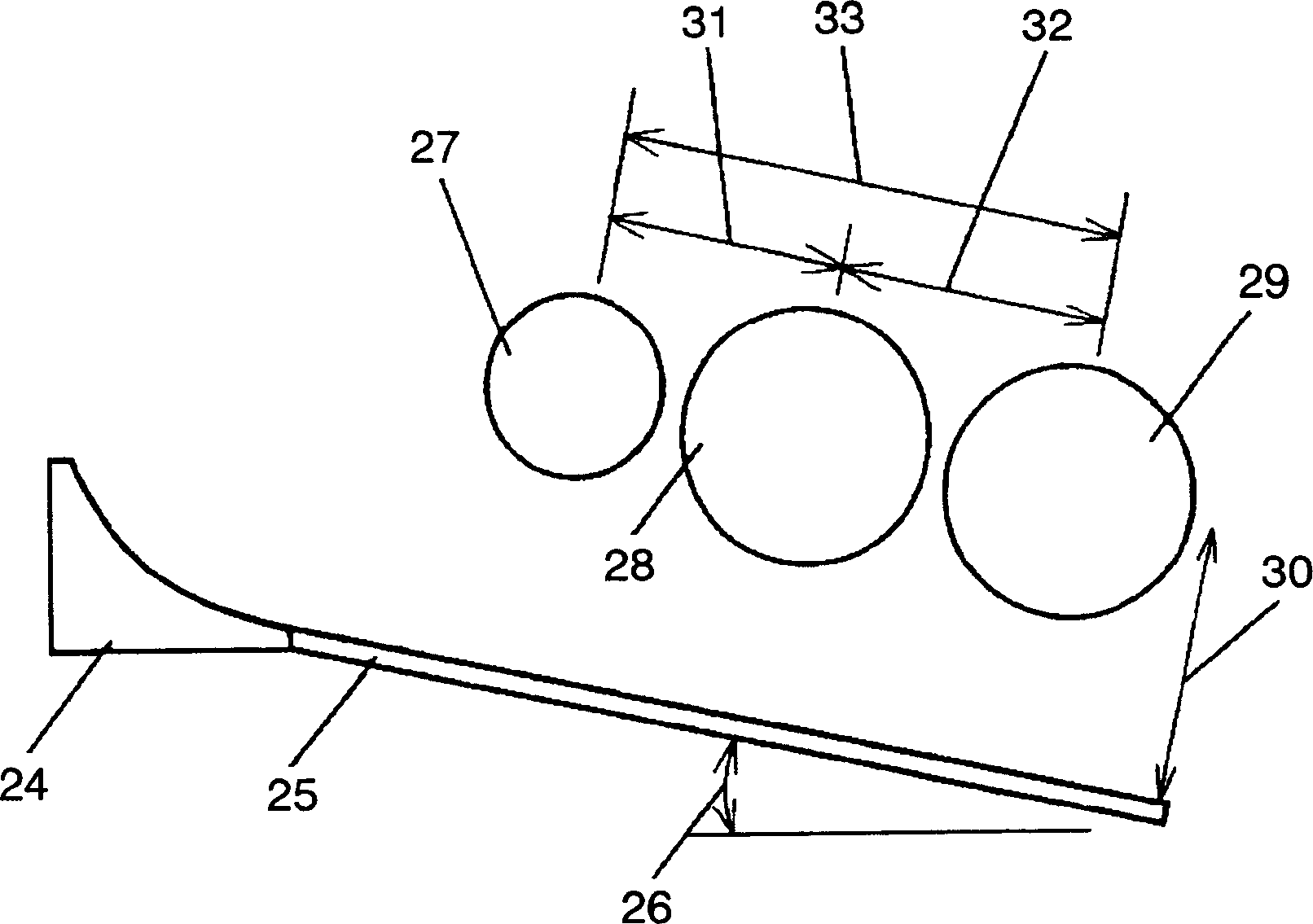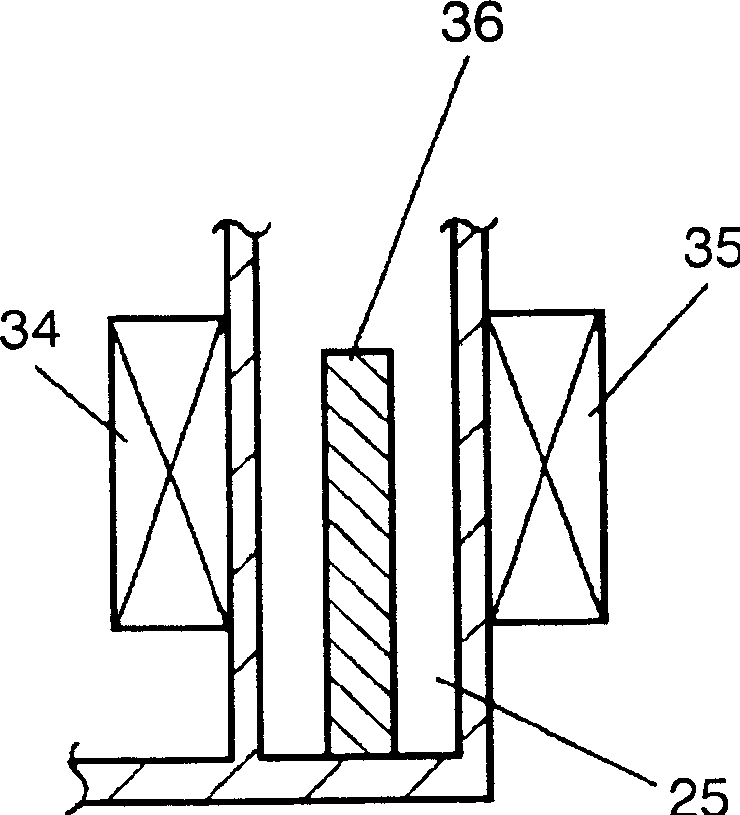Coin identification device
A technology for coin recognition and coins, which is applied in the direction of coin inspection, handling coins or valuable banknotes, instruments, etc., and can solve problems such as differences and unstable recognition results
- Summary
- Abstract
- Description
- Claims
- Application Information
AI Technical Summary
Problems solved by technology
Method used
Image
Examples
no. 1 Embodiment approach
[0027] figure 1 It is a front view showing the coin identification device in the first embodiment of the present invention. exist figure 1 Among them, the coin insertion opening 21 extends toward one longitudinal side 23a of the housing 23 and is connected to the guide groove 22 . Then, a bumper 24 made of a material harder than any coin is provided on the extension of the guide groove 22 . The coin passage 25 is connected to the buffer 24 and is provided toward the other side surface 23b of the casing 23 . Therefore, the inserted coin is introduced into the channel 25 after being changed by the buffer 24 in an advancing direction by about 90 degrees.
[0028] The channel 25, as figure 2 As shown, the angle 26 to the horizontal is inclined by 10 degrees to 12 degrees. Moreover, it is also inclined about 9 degrees to the rear, so that the coin can rotate naturally on the channel 25 .
[0029] Discrimination sensors 27 , 28 , and 29 are provided on the wall surface of t...
no. 2 Embodiment
[0052] Figure 6 is the output waveform of the sensor of the second embodiment. In the second embodiment, a sensor is formed by winding two types of coils on one sensor. That is, the coils of the material sensor 81 and unevenness sensor 82 are wound on the same core.
[0053] In this case, the fifth time 83 between the leading edge point 82a of the unevenness sensor 82 and the leading edge point 81a of the texture sensor 81, and the fifth time 83 between the trailing edge point 82b of the unevenness sensor 82 and the trailing edge point 81b of the texture sensor 81 The sum of the sixth time 84 can obtain substantially the same effect even if the material sensor output duration 85 is omitted. in addition, Figure 6 Among them, the horizontal axis 86 represents time, and the vertical axis 87 represents the output levels of the identification sensors 81 and 82 .
[0054] In this case, since the sensor is formed by winding two kinds of coils around each sensor, the passage 25 ...
no. 3 Embodiment
[0056] Hereinafter, the coin identification device of the third embodiment will be described, Figure 7 It is a cross-sectional view showing the relationship between the identification sensors 27, 28, 29, the channel 25, and the coin 36. In addition, in the third embodiment, the same reference numerals are attached to the same devices as those in the first embodiment to simplify the description.
[0057] Figure 7 Among them, 146a is the position where one end of the coin 36 is in contact with the concave-convex sensor 27 (the sensor closest to the input port 21 ).
[0058] Then, the coin 36 rolls in the channel 25, and the center portion of the coin 36 moves to the center point of the unevenness sensor 27 at the position 146b. Similarly, the central part of the coin 36 at the position 146c moves to the central point of the texture sensor 28; the central part of the coin 36 moves to the central point of the thickness sensor 29 at the position 146d; The end is completely sep...
PUM
| Property | Measurement | Unit |
|---|---|---|
| Diameter | aaaaa | aaaaa |
Abstract
Description
Claims
Application Information
 Login to View More
Login to View More - R&D
- Intellectual Property
- Life Sciences
- Materials
- Tech Scout
- Unparalleled Data Quality
- Higher Quality Content
- 60% Fewer Hallucinations
Browse by: Latest US Patents, China's latest patents, Technical Efficacy Thesaurus, Application Domain, Technology Topic, Popular Technical Reports.
© 2025 PatSnap. All rights reserved.Legal|Privacy policy|Modern Slavery Act Transparency Statement|Sitemap|About US| Contact US: help@patsnap.com



